Introduction
Southern Federal University, SFedu for short, is a scientific and educational center in southern Russia and a leading research university in Russia. It is located in Rostov-on-Don, a city famous for its Cossack culture, and Taganrog, the hometown of Chekhov, on the banks of the Don River.
Overview
Student size: 24,000 students, including 2,200 foreign students.
Faculty: 2,481 teachers, 3,047 scientific educators, 1,662 associate doctors, 458 doctors, and 70% of scientific educators are high-level experts.
History
Its history can be traced back to the Warsaw University in Rostov from 1915 to 1917. During the First World War, Warsaw University was urgently evacuated to Moscow by Tsarist Russia due to the German advance, and then settled in Rostov for a short time. In 1917, the Russian Provisional Government changed the name of the school to Don University. During the Soviet period, it was called North Caucasus State University. During the Soviet period, the name of the school changed frequently. After the establishment of the Russian Federation, the school was renamed Rostov State University. On November 23, 2006, Rostov State University, Taganrog State Radio University, Rostov State Normal University and Rostov State Academy of Architecture and Art, four top-level institutions in southern Russia, formed the Southern Federal University.
Establishment time
It was officially established on November 23, 2006, but its history can be traced back to 1915.
School strength
Teaching quality: As one of the ten federal universities in Russia, it has high teaching quality and focuses on cultivating students' innovative thinking and practical ability. It offers 82 undergraduate majors, 23 expert majors, 84 doctoral majors, and 11 Postdoctoral research mobile stations.
Research achievements: It has 221 laboratories, 2 engineering technology centers, 21 small innovation institutes, 9 innovative technology program centers, and the "Smart Materials" International Research Center and other research facilities. The school's research in the fields of micro-aircraft, micro-helicopters and robots is in a leading position in Russia.
International exchanges: It has extensive international cooperation and has established cooperative relations with many internationally renowned universities and research institutions. It actively carries out student exchange, joint training, scientific research cooperation and other projects to enhance the school's internationalization level and international influence.
Institutional nature
Public university.
Educational philosophy
Committed to cultivating professional talents with innovative spirit, practical ability and social responsibility, focusing on the comprehensive development and personalized training of students, encouraging students to actively participate in scientific research and social practice activities, improving students' comprehensive quality and competitiveness, and contributing to the economic and social development of southern Russia and the whole country.
Key laboratories and disciplines
Key laboratories: In addition to the research centers mentioned above, the school also has several scientific laboratories in cooperation with the Russian Academy of Sciences, providing good conditions for teachers and students to carry out scientific research.
Key disciplines: Physics, mathematics, chemistry, biology, medicine, economics, law, education, art and other disciplines are strong, among which the chemistry major ranks 601st in the world.
Faculty
The school has 22 educational units, including departments, colleges and academies.
Ranking
2023 QS World University Rankings: 541-550.
2023 U.S. News World University Rankings: 1647.
2022 QS Emerging Europe and Central Asia Rankings: 90.
2024 QS World University Rankings: 851.
2024 U.S. News World University Rankings: 1703.
2024 THE World University Rankings: 1201.
Expenses
Based on a master's degree 1+1 Taking the project as an example, the project fee is RMB 129,500, including two-year tuition for master's students, translation and notarization of relevant documents, invitation letter processing, overseas reception services, etc.; overseas dormitories provide double, triple or quadruple dormitories, about RMB 180 per month, the average living expenses per person in Rostov-on-Don is about RMB 1,000 per month, and the medical insurance fee is about RMB 400 per year.
Campus
Teaching facilities: It has advanced teaching facilities and scientific research equipment, including computer laboratories, libraries, multimedia classrooms, etc., providing students with a good learning and research environment.
Campus environment: Rostov-on-Don and Taganrog have a warm and pleasant climate, beautiful surrounding environment, and complete urban infrastructure, which provides convenient conditions for students' study and life.
-

Peter the Great St.Petersburg Polytechnic University
-
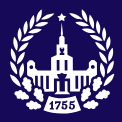
Moscow State University M. V. Lomonosov
-
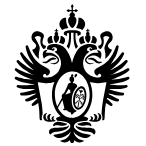
St. Petersburg State University
-
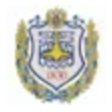
Bauman Moscow State Technical University
-
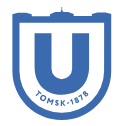
Tomsk State University
-
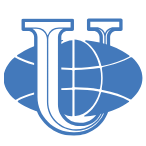
Peoples' Friendship University of Russia
-
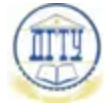
Don State Technical University
-

Moscow Institute of Physics and Technology
-
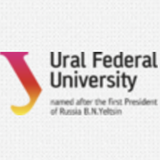
Ural Federal University
-

Kazan Federal University
-

Mesoamerican University
-

Istmo University
-

Mariano Galvez University of Guatemala
-

Regional University of Guatemala
-

Galileo University
-

Francisco Marroquín University
-

Rafael Landívar University
-

University of the Valley of Guatemala
-

University of San Carlos of Guatemala
-

Technological Institute of Tlaxcala Plateau
-

Golfo University
-

Technological University of South Sonora
-

Technological University of Huejotzingo
-

Tizimín Institute of Technology
-

Chilpancingo Institute of Technology

